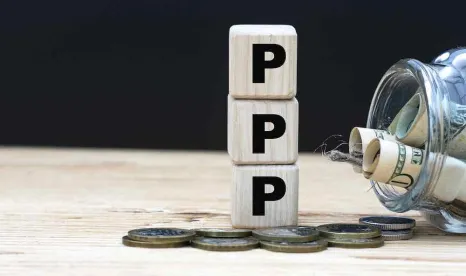Nearly one year ago, in response to the COVID-19 pandemic and related economic downturn, the Small Business Administration-backed Paycheck Protection Program (PPP) provided loans to help businesses keep their workforce employed during the COVID-19 crisis. This article reviews how the government has been enforcing the requirements of the program.
CARES Act, PPP
Under the Coronavirus Aid, Relief, and Economic Security Act (CARES Act) and related legislation, more than $3 trillion in government subsidies, loans, and grants were appropriated for pandemic-related economic aid, including more than $525 billion earmarked for the PPP.
Between March 2020 and the PPP’s closure in August 2020, the SBA, in coordination with the nation’s banks, approved more than 5.2 million loans earmarked for small and medium size businesses with fewer than 500 employees suffering the immediate effects of the pandemic lockdown, including being forced to shutter business and lay off employees.
PPP loans were made to businesses in various sectors, from manufacturing, construction, finance, law, healthcare, education, and retail to the arts. They enabled businesses to continue paying salaries and wages for eight weeks after receipt of funds. The PPP provided critical funding to support businesses and their employees during the initial months of the COVID-19 pandemic.
On January 13, 2021, the SBA started accepting applications for “Second Draw” PPP loans from eligible businesses that previously received a PPP loan. A minimum of $25 billion will be earmarked for such loans to eligible borrowers with up to 10 employees or for loans of up to $250,000 to eligible applicants in low- to moderate-income communities. To be eligible for a Second Draw PPP loan, a borrower must: (1) have received a First Draw PPP loan and has (or will) used the full amount for an authorized use; (2) have 300 or fewer employees; and (3) must demonstrate at least a 25% reduction in gross receipts between comparable quarters in 2019 and 2020. Loan terms for Second Draw loans generally track those for First Draw loans.
The SBA is accepting Second Draw applications until March 31, 2021. However, on February 2, 2021, President Joe Biden signed an executive order designed to aid the “smallest” businesses by creating a two-week window beginning February 24, 2021, during which only businesses with up to 20 employees can apply for PPP loans.
PPP Loan Forgiveness
Since fall 2020, businesses have worked with the SBA and their lenders to fulfill PPP requirements by submitting necessary paperwork and certifications to obtain PPP loan forgiveness. Government agencies tasked with PPP oversight have been identifying waste and abuse by applicants or recipients of PPP funds and holding wrongdoers legally accountable. They also have initiated many wide-ranging investigations of civil and criminal misuses of PPP funds.
Government Oversight, Investigations
To date, the FBI, the SBA’s Office of Inspector General, the IRS, the U.S. Postal Inspection Service, the Office of Inspectors General from the FDIC and Federal Housing Finance Agency, the Fraud Section of the Department of Justice (DOJ), and U.S. Attorney’s Offices around the country have charged approximately 100 individuals with PPP fraud under the federal False Claims Act (FCA) and other federal statutes.
Collectively, those charged are alleged to have stolen more than $175 million from the PPP, while actual losses have topped $70 million. To date, almost half the thefts have been recovered through forfeitures and liquidation of hard assets (e.g., vehicles, homes, and jewelry) that government agents have successfully seized or attached from individuals.
Prosecutors have identified fraudsters attempting to steal $30,000 and up. For example, the DOJ has charged 11 people, including a professional athlete and his business manager, for allegedly conspiring in Miami and Cleveland to defraud the government of $24 million using falsified records and fraudulent PPP applications.
Fraudsters Identified, Held Accountable
The Miami and Cleveland conspirators are accused of using general strategies emblematic of many fraudsters seeking to illegally “game” the PPP. For example, fraudsters have submitted applications containing blatant misrepresentations about the number of employees “working” for a company and falsified certifications about average monthly income and payroll numbers. Indeed, in some cases, for example, applicants resorted to submitting fake tax records, “dummy” payroll and business income records, and personal identification information stolen from unsuspecting victims.
More troubling is that fraudsters have used illegally obtained funds for illegitimate purposes, such as purchasing luxury items and to “line the pockets” of PPP thieves, rather than for designated PPP purposes to support domestic business. For example, one defendant pleaded guilty to spending $320,000 of PPP funds to purchase a Lamborghini sports car. Others have been charged with using PPP funds to buy real estate, jewelry, and expensive art.
Not surprisingly, fraudsters are typically reticent about their prior criminal pasts when submitting PPP applications.
Recent Criminal Indictments
In United States v. Yates, 5:21-cr-00003-RWS-CMC, a recent indictment of an individual, Samuel Yates was charged on two counts of wire fraud for allegedly seeking millions of dollars in SBA-approved PPP loans on behalf of two bogus companies. The indictment alleges that in one PPP application, Yates sought $5 million in COVID-19 relief funds by falsely representing that the company employed 400 people with a $2 million monthly payroll. In a second application, Yates allegedly applied for a $500,000 PPP loan to cover payroll for 100 employees. According to the indictment, none of the information Yates included in his application was true. Indeed, Yates allegedly used a random name generator to list names of “employees” in his applications and submitted phony corporate tax returns attesting to the fiscal health of his “companies.”
In United States v. Hsu, CR-20-191-JLR, defendant Austin Hsu pleaded guilty to a single count of wire fraud. Hsu admitted to submitting nine fraudulent Economic Injury Disaster Loans (EIDL) and other PPP applications seeking $1.1 million in purported relief, of which $700,000 was paid out. To obtain fraudulent loans, Hsu claimed to own and operate a healthcare company (Back 2 Health), for which he received EIDL and PPP funds. Hsu admitted to using names of current (and former) Back 2 Health employees to submit false PPP applications for four different companies he also owned. Hsu further admitted to bolstering his applications with fraudulent federal tax returns. Additionally, he admitted to creating a new company in June 2020 and then applying for EIDL relief, misrepresenting to SBA that the company had been in business since 2017 and, as of the application date, had nine employees and $1.5 million in gross receipts.
Hsu is scheduled for sentencing on April 19, 2021, and could face up to five years in federal prison, significant fines, and full restitution to the SBA and PPP programs.
Government Civil Settlements
Recent DOJ comments confirm criminal enforcement of clear PPP fraud will be a government priority. Legal observers have opined that the DOJ will face headwinds building civil fraud cases in light of complex regulatory guidance issued in connection with the PPP, EIDL, and other subsidy programs created by the CARES Act.
DOJ policy is not to rely on “sub-regulatory guidance,” such as SBA’s FAQ guidance for the PPP program, to support a civil enforcement action. The 2018 edition of the DOJ Manual expressly bars DOJ from using “mere noncompliance with guidance documents issued by federal agencies” to establish an FCA case.
Nonetheless, the DOJ might allege that an applicant’s failure to comply with government-issued regulatory guidance proves scienter (intentional or knowing conduct), an essential element of an FCA action. Moreover, while the DOJ’s Civil Division is expected to bring fewer fraud cases against PPP applicants who make false certifications in their loan applications, the government is expected to aggressively pursue civil enforcement actions of companies and persons who make false certifications in their applications for loan forgiveness. Companies seeking loan forgiveness, therefore, should carefully document use of PPP funds and comply with all program requirements.
Still, the government recently completed a civil fraud investigation that culminated successfully in admissions of liability, full restitution of PPP funds, and significant fines.
In United States v. SlideBelts, Inc. and Brigham Taylor, allegations of fraud against Sacramento-based internet retail company SlideBelts, Inc. and its President/CEO Brigham Taylor resulted in the DOJ’s first civil settlement with a recipient of PPP funds. SlideBelts and Taylor have agreed to reimburse the SBA for the $350,000 they were charged with illegally receiving from the PPP fund and pay a $100,000 fine, $17,500 of which will come directly from Taylor.
As part of the settlement agreement, SlideBelts and Taylor also admitted to lying to a federally insured bank in their application by stating that SlideBelts was not in bankruptcy in the hope the bank would approve (and the SBA would guarantee) the $350,000 PPP loan to the company. Indeed, the company had filed a Chapter 11 petition with the Bankruptcy Court (In re SlideBelts, Inc., 2:20-bk-24098) initially in August 2019 and, later, in June 2020.
The settlement resolves charges that could have resulted in payment of more than $4 million under the FCA and Financial Institutions Reform, Recovery, and Enforcement Act.
PPP Whistleblower Complaints
Organizations should be prepared for possible whistleblower complaints alleging the company misused PPP funds and that such whistleblower complaints caused the employee to suffer an adverse employment action. Indeed, recent comments from DOJ attorneys confirm that the DOJ continues to take steps to facilitate the investigation and reporting of COVID-19 fraud and abuse to the government.




 />i
/>i

